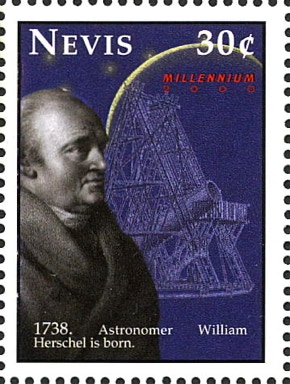William Herschel
Frederick William Herschel (1738–1822) was a German-born musician and amateur astronomer who taught music in the genteel English town of Bath by day and observed the heavens at night with telescopes of his own construction. In 1781 March he chanced upon an unknown object which at first he took to be a comet but which was later recognized to be a new planet – the first planet ever discovered, since it was unknown to ancient astronomers on account of its faintness. Herschel’s discovery doubled the known size of the Solar System overnight, made him an international celebrity and ensured him the patronage of the King of England, George III.
He was helped in his later observations by his sister Caroline, who is commemorated on stamps from the island of Redonda and Guyana.
A selection of Herschel stamps is shown here.
Discovery of Uranus (Gabon, 1981)
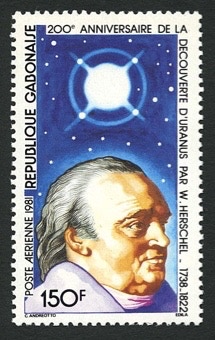
The west African nation of Gabon marked the 200th anniversary of the discovery of Uranus with this stamp. Herschel is shown underneath a depiction of Uranus taken from an old telescopic photograph, on which the planet is surrounded by a ring – this is actually a photographic effect, known as a halation ring, not the planet’s true ring.
Stanley Gibbons no. 753
Discovery of Uranus (Mali, 1981)
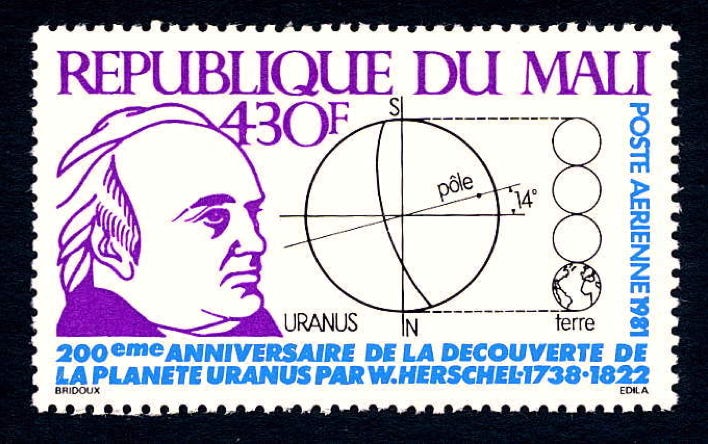
Mali’s commemoration of the 200th anniversary of the discovery of Uranus shows Herschel next to a sketch of the planet. The sketch illustrates the planet’s extreme axial tilt and compares its diameter to that of the Earth, which is a quarter the size.
Stanley Gibbons no. 852
Herschel’s Telescope (Nicaragua, 1985)
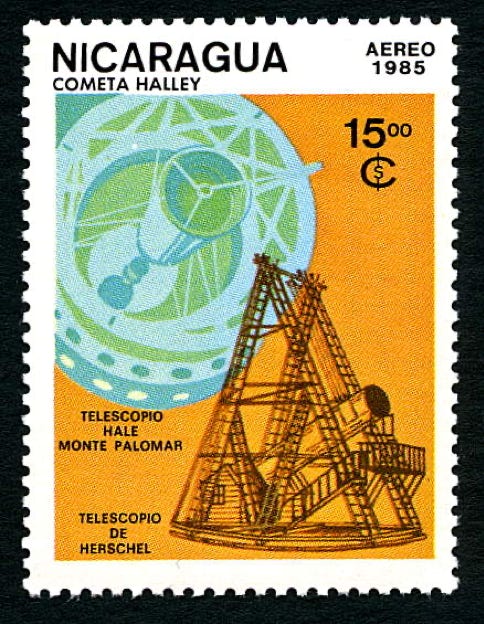
William Herschel’s 1.2-m (48-inch) reflector at Slough, England, was in its day the largest telescope in the world. It is shown along with another world-beater, the 5-m (200-inch) Hale reflector on Mount Palomar, on this stamp from Nicaragua which formed part of a set marking the appearance of Halley’s Comet.
Stanley Gibbons no. 2712
Herschel and Uranus (Ivory Coast, 1986)
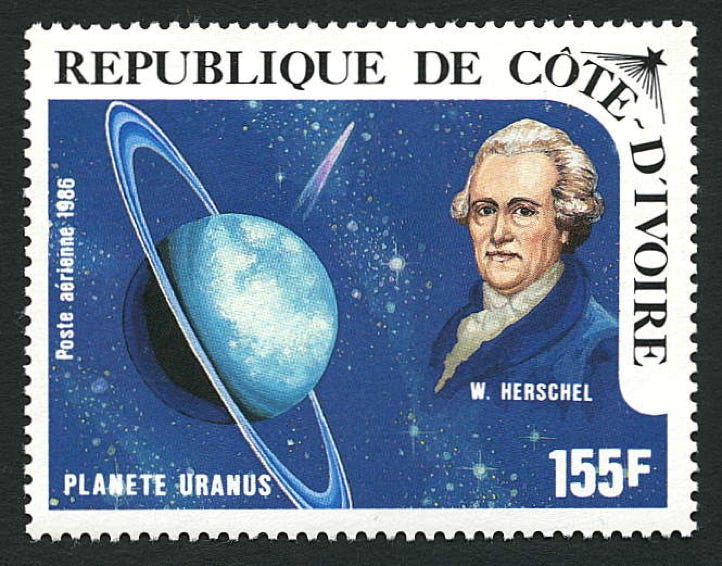
William Herschel floats in the ether next to Uranus and its rings with Halley’s Comet in the background in this 1986 stamp from the Ivory Coast, part of a set commemorating the return of Halley’s Comet.
Stanley Gibbons no. 875
Herschel, Uranus, and Miranda
(Central African Republic, 1987)
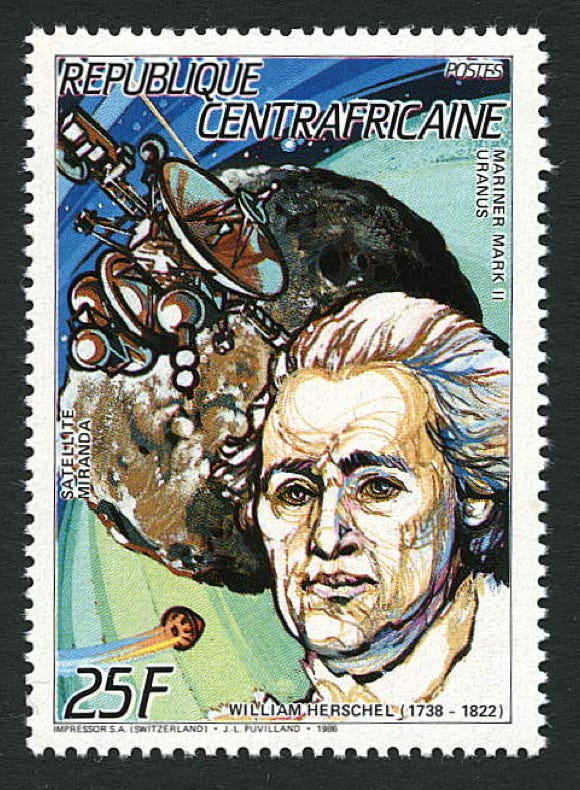
On this stamp from the Central African Republic, a somewhat ghostly Herschel is shown against a backdrop of Uranus along with the space probe Voyager 2 (described under its old name of Mariner Mark II) which passed Uranus in 1986, and the satellite Miranda, which Voyager photographed in detail. Herschel discovered two moons of Uranus, but Miranda was not one of them. The stamp was part of a set of six commemorating various feats and personalities of space research.
Stanley Gibbons no. 1248
Herschel’s birth (Nevis, 2000)
The birth of Herschel was commemorated by the island of Nevis in the West Indies on this dark and gloomy stamp, part of a Millennium sheet that covered events in the years 1700–1750. The text in the margin of the sheet says: ‘He built high magnification telescopes that let him observe the heavens with greater detail. Herschel discovered the planet Uranus and advanced our understanding of nebulae. He also founded stellar astronomy.’
In the background is an outline of his great 1.2-m telescope at Slough, and what is apparently Uranus in crescent phase based on a picture from Voyager 2.
Stanley Gibbons no. 1409
